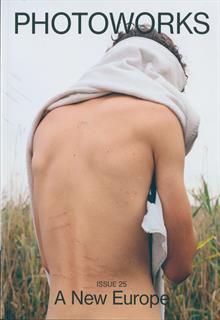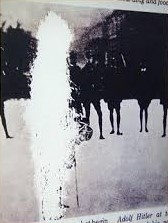In retrospect, I find it difficult not to read the pictures in Paul Graham’s visual history New Europe as a prophecy. It is almost uncanny. The year 1989 was a hymnic moment for many. The Berlin Wall fell, and the end was in sight for the GDR and the Soviet Union, for ossified, leaden state communism. Europe seemed to unite, and with it the world. The idea of being freed from the history that had determined people’s lives in the 1980s seemed to become real – freed from political responsibility on one hand and the social market economy on the other. From this point on, each individual could go their own way without worry, could live out their own identity in all its facets.
Many also heard the first dissonances in this hymnic moment. Some saw a deep, dark shadow behind the bright, promising light. In January, 1993, when the Fotomuseum Winterthur opened with an exhibition of New Europe, some already knew how quickly neoliberal capitalism spread, and how it would became sharper while wearing a triumphant, scornful grin. The enemy had broken in, and with it the 'social' in capitalism. Margaret Thatcher had paved the way in the 1980s with the deregulation of the financial sector, privatisation of state-owned enterprises, and deindustrialisation. As for the frivolous notion of freedom from history? In 1991, war broke out in the Balkans at the gates of Western Europe, making it clear that history would catch up to us all sooner or later.
The pictures of New Europe are suffused with such ambivalences, premonitions, and shadows. A Spanish diptych pairs the eccentricity and energy of the time in Madrid with a spitting contempt for Franco’s tomb. Pictures of exuberant dancers rub up against dark building facades with window crosses that recall gravestones. Real events in history become beer labels in supermarkets. The people seem tense. In all its ebullience, in the transformation of history into images, into products, in the sliding into consumption, sex and drugs, a deep existential loss is felt, a Sartrean nothingness: godless, frameless, meaningless. In the evolution into a world of global consumerism, it becomes apparent step by step that the past clings to our shoes, and that new ways of being bring with them much that is wrong. Graham’s book New Europe began with a stanza from T S Eliot’s The Waste Land: ‘And I will show you something different from either / Your shadow at morning striding behind you / Or your shadow at evening rising to meet you; / I will show you fear in a handful of dust’. In 2019, we feel just how much the past and the messiness of politics is catching up to us. New forms of fascism, new forms of radicalisation and ideologisation are making a stir, and we’re once again afraid of the next steps in Europe and worldwide, the next great shadow.
Graham photographed the images comprising New Europe around 1989, and first published and exhibited them in 1993. In the images, he argues politically, economically, and existentially, linking the fate of the individual with the political and economic structure of Europe. He shows people exuberantly celebrating or introspective, fragile, and tense. Of course, when looking back from today’s perspective, the exhibition lacks the next major field – the idea of the increased presence of the digital – as well as the now far more visible and measurable consequences of industrialisation for the environment. Graham was an ideal choice for the inaugural exhibition at the Fotomuseum Winterthur. With him, I was able to showcase not only a highly relevant, multilayered topic, but also the first of a new form of documentary photography, one that oscillates between document and essay, between objective representation and subjective perspective, one that asserts itself through variations and size. Importantly, his photography was in colour right from the start. We remember how strongly he, Martin Parr, Peter Fraser, and others in England were attacked for no longer photographing sociopolitical issues in black and white, as was expected, but in colour. This move was hugely contentious, but from the perspective of many was an important step in the right direction. Furthermore, this use of colour enabled him to masterfully explore the tension between image and likeness, between depiction and design – a declaration of the searching subjective gaze. Such tensions were already evident in Graham’s previous works Beyond Caring and Troubled Land, and would continue to be explored in later works such as End of an Age and his masterpiece A Shimmer of Possibility. Thus, from the outset, Fotomuseum Winterthur helped to lay the groundwork for a new approach to photography in museums, a way through which photography can engage with the world.
(I curated in 1993 at Fotomuseum Winterthur the exhibition of Paul Graham: New Europe. It was the opening exhibition of Fotomuseum Winterthur)


